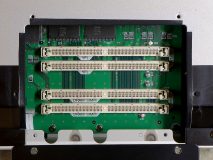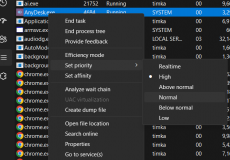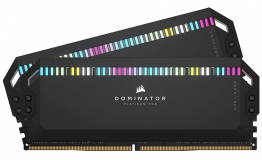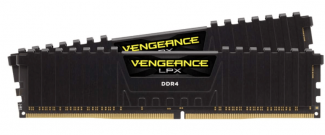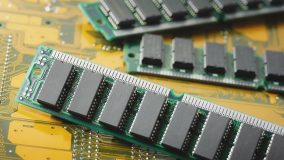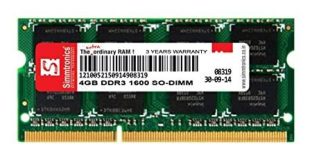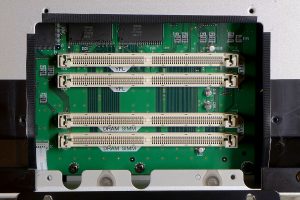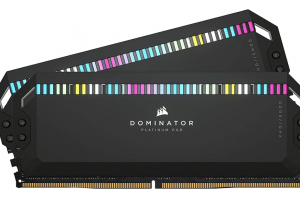RAM and ROM are the most essential elements of your device when it comes to the proper management of data. But have you ever wanted to know the differences between RAM and ROM? Understanding the differences between RAM and ROM can be helpful in finding any issues with it.
RAM is the Random Access Memory and can be read and changed in any order. It is used for accessing the data that you are currently using on your processor. The ROM or Read only Memory refers to the non-volatile memory that is used for storing the data related too the operating system.
What is RAM?
RAM stands for Random Access Memory. It is the primary memory on your computer and is used for storing the data that is currently being used on your device. It is a volatile memory, and the data is lost when the computer is turned off.
The RAM does save the data temporarily, unlike the primary storage such as a Hard drive. RAM is also called main memory. The processor on your computer will help you in access the memory content on the RAM directly. The time taken to access the data from the RAM would be considerably less than the time taken to access it from the hard drive or primary storage. The RAM is made of semiconductor materials and used in the form of ICs.
What is ROM?
ROM stands for Read Only Memory. It is another type of primary memory on your computer. The memory stores the data that forms part of the computer instructions and programs that are not needed to be changed. ROM generally consists of the data that does not need to be changed, such as BIOS.
ROM is generally used for saving the data such as firmware or operating systems. In fact, you do not need to edit the data on your ROM. The ROM is also a computer memory made of semiconductors. They are also built in the form of ICs.
The ROM stores your data permanently. It is a non-volatile memory. The data will remain unchanged even when the computer is turned off. The data on the ROM can only be read and not be edited.
What Are the Types of RAM (Random Access Memory)?
There are several types of RAM that can including Static RAM and Dynamic RAM. The two RAM types are abbreviated as SRAM and DRAM.
SRAM
The SRAM has circuits that can retain the stored data until the power supply is available. This memory needs the power supply to be constantly available. The SRAM is generally used for the cache memory on a motherboard.
DRAM
DRAM or Dynamic RAM stores the data in separate capacitors. It is used as standard computer memory in most systems. The RAM memory is a volatile memory and needs to be refreshed constantly.
Differences Between SRAM and DRAM
| SRAM | DRAM |
| It has a lower access time | It has a higher access time |
| It is costlier | It costs less than SRAM |
| It needs a constant power supply | It requires less power supply |
| Complex internal circuitry | Smaller internal circuitry |
| Less storage capacity | More storage capacity |
| Low packaging density | High packaging density |
Other Types of RAM
Some other types of RAM can include:
- FPM DRAM: The Fast Page Mode Dynamic Random Access Memory comes with a maximum data transfer rate of 176 Mbps. It waits through the process of locating the data by column and row and then processes the data.
- SDR RAM: The RAM comes with the synchronous random access memory. It offers you an access time of 25 to 10 nanoseconds. They use DIMM and provide you access to 168 contacts.
- RD RAM: The RDRAM stands for Rambus Dynamic Random Access Memory. It can be helpful in providing you with a transfer speed of 800 MHz or 1,600 Mbps. They can generate more heat.
- EDO RAM: EDO RAM stands for Extended Data Output Random Access Memory. It does not wait for the completion of the processing of the first bit before reading the next bit.
- DDR SDRAM: This is the modern range of SDRAM. DDR stands for Double Data Rate. The major difference between the SDRAM and DDR SDRAM lies in the fact that the latter has a higher bandwidth. This will offer you a higher speed. The DDR RAM has several iterations as of now, and the latest one is DDR5.
The differences in RAM would between different versions of include:
| Standard | Time in Market | Internal Rate | Bus Clock(MHZ) | Prefetch | Data rate(MT/s) | Transfer rate(GB/s) | Voltage |
| SDRAM | 1993 | 100-166 | 100-166 | 1n | 100-166 | 0.8-1.3 | 3.3 |
| DDR | 2000 | 133-200 | 133-200 | 2n | 266-400 | 2.1-3.2 | 2.5/2.6 |
| DDR2 SDRAM | 2003 | 133-200 | 266-400 | 4n | 533-800 | 4.2-6.4 | 1.8 |
| DDR3 | 2007 | 133-200 | 533-800 | 8n | 1066-1600 | 8.5-14.9 | 1.35/1.5 |
| DDR 4 | 2014 | 133-200 | 1066-1600 | 8n | 2133-3200 | 17-21.3 | 1.2 |
What Are the Types of ROM?
The ROM, which is the non-volatile memory is available in different variants. Some of the types of ROM can be summarised as here below:
- PROM: PROM stands for programmable read-only memory. It can be programmed once by the user. The process of burning the data on the ROM is an irreversible process. Once the ROM has been programmed, the data on it cannot be erased.
- EPROM: EPROM stands for erasable programmable read-only memory. The ROM can be programmed and erased by exposing it to the ultraviolet light. You will need to erase all the data on the ROM to reprogram it.
- EEPROM: The electrically erasable programmable read-only memory. It is a memory that can be erased and reprogrammed using an electrical charge. You can erase the selected sections of the data bit by bit. You do not need to erase the entire chip. This can be a great option for an increased flexibility.
- Mask ROM: Also called MROM, the ROM can only be programmed by the manufacturer of the integrated circuits.
Characteristics of RAM
A few of the prime characteristics of the RAM can include:
- RAM is used in the normal operations of the computer, which includes starting and loading the operating system and other programs.
- It is quite faster to read from and write to RAM
- The data in the RAM will stay only as long as the computer is running
- The RAM chip can store multiple amounts of data that can run into several GBs.
Characteristics of ROM
Some of the characteristics of ROM can be specified as:
What is the Difference Between RAM and ROM?
Both RAM and ROM are the primary memories on the computer. They are incredibly different from one another.
The table below should provide you with a good insight into the differences between RAM and ROM:
| Features | RAM | ROM |
| Definition | Random Access Memory | Read Only Memory |
| Price band | Expensive | Cheaper when compared to RAM |
| Speed | High | Lower |
| Capacity | High (1 to 256 GB) | Low 94 to 8 MB) |
| Data access | Data can be erased, modified, and read | Data can only be read but cannot be erased or modified |
| Data usage | Data is used by the CPU | Data is used for starting the computer |
| Access to CPU | The data on the RAM can be accessed directly by the CPU | The data needs to be moved to RAM, and then the CPU can access it |
| Retention of data | Volatile | Non-volatile |
| Used as/in | CPU Cache, Primary memory. | Firmware, Micro-controllers |
| Data Accessibility | Easily accessible | Difficult to access |
| Storage | The data stored is temporary | The data stored is permanent |
RAM vs ROM: Summary
The RAM and ROM form part of the complete memory requirements of a computer. The significant difference between the RAM and ROM lies in the fact that the RAM is volatile while the ROM is non-volatile. The differences between RAM and ROM and the multiple types of RAM and ROM outlined in this compilation help you arrive at the best experience in dealing with the two main memories on your computer.
Frequently Asked Questions
What are the types of ROM (Read Only Memory)?
The primary types of ROM can be summed up as MROM (Masked read-only memory), PROM (Programmable read-only memory), EPROM (Erasable Programmable read-only memory), and EEPROM (Electrically erasable programmable read-only memory).
What are the types of RAM (Random Access Memory)?
The major types of RAM include SRAM and DRAM. While SRAM is used for cache memory. The DRAM is the main memory used for most of the computers and laptops. There are several other RAM modes that include SDRAM, DDR RAM, and several other options. DDR RAM has multiple versions that include DDR2, DDR3, DDR4, and the latest DDR5.
Is ROM secondary memory or primary memory?
ROM is a primary memory, and it stores all the instructions needed for starting the system and accessing the secondary memory.

